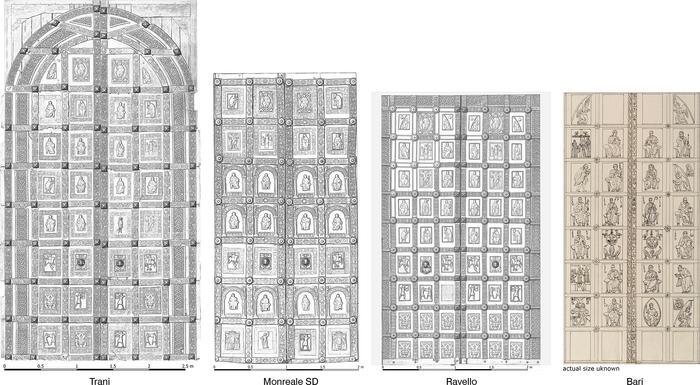In an extraordinary endeavor that merges art with science, researchers have undertaken a comprehensive chemical analysis of three medieval bronze doors crafted by the renowned Italian artist Barisanus of Trani. These masterpieces, dating back to the 12th century, are not merely artifacts of historical significance but reflect the intricate craftsmanship and technological innovations of their time. The doors, located in Trani, Ravello, and Monreale, have captured the attention of scholars and enthusiasts alike, igniting debates about their origins, materials, and the artistic vision behind their creation.
The doors represent a remarkable intersection where artistry meets metallurgy, inviting questions about how bronze was manipulated to create such enduring works. The study seeks to uncover the chronological order of the doors and determine which one is the oldest, using techniques that explore the chemical compositions of the bronze. By utilizing a range of advanced analytical methods, including X-ray fluorescence spectroscopy, the team aims to reveal not only the source of the material but also insights into the methods of production used by Barisanus and his contemporaries.
At the heart of this research lies a pressing question: what does the composition of bronze tell us about the socio-economic conditions of 12th century Italy? Bronze, an alloy of copper and tin, was highly prized in medieval Europe due to its durability and aesthetic appeal. Understanding the sources of these metals offers a glimpse into the trade networks that existed during this period and highlights the technological advancements that allowed craftsmen like Barisanus to thrive.
The analytical techniques employed in this study are cutting-edge. X-ray fluorescence, for instance, allows researchers to identify the elemental composition of the bronze without damaging the artifacts. This non-invasive method ensures the preservation of these historical treasures while providing invaluable data that can reshape our understanding of medieval art. The results of these analyses will be vital in attributing the works correctly and further appreciating the craftsmanship involved.
In addition to revealing the origins of the bronze, the study aims to shed light on the technological processes that Barisanus might have employed. The use of alloys, casting techniques, and surface treatments could have varied significantly among artisans of the period. By comparing the chemical signatures found in the doors, researchers can identify patterns and potentially link the creations to specific workshops or schools of thought prevalent in medieval Italy.
Moreover, the collaborative effort among scholars from Austria, Germany, and Italy signifies a concerted approach to heritage conservation and historical scholarship. The interdisciplinary nature of the research illustrates how chemistry and art history can work hand in hand. It not only fosters a deeper understanding of the objects of study but also encourages the sharing of knowledge across national and disciplinary boundaries.
As the research progresses, the implications extend beyond academic circles. By making these findings available to the public, the study aims to engage a wider audience with the history of these doors and their significance in the narrative of medieval art. Public interest in heritage preservation is growing, and studies like this play a crucial role in fostering appreciation for historical artifacts.
While the study can uncover much about the doors themselves, it also raises broader questions about how we interpret and interact with art from the past. As scholars present their findings, discussions will likely arise regarding the value and meaning we ascribe to historical objects, especially in a contemporary context where such artifacts are often at risk of being overlooked or forgotten.
The culmination of this research is set to be published in the well-respected journal PLOS One in March 2025, ensuring that the findings will reach a global audience and contribute significantly to the field of art history and conservation. This research is made possible through funding from the Austrian Science Fund, which underscores the importance of support for investigations that illuminate our cultural heritage.
The determined efforts of the researchers and the cutting-edge techniques they employ not only stand to rewrite the history of Barisanus’s doors but also to enhance our understanding of the broader context of medieval arts. As they continue their work, the anticipation surrounding their findings is palpable, promising to unlock secrets that lie hidden in these bronze relics.
In conclusion, the study of Barisanus of Trani’s bronze doors is more than a search for historical truth; it is a journey into the past that enlightens our present. As researchers delve into the materials and methods of this iconic artist, they invite us all to appreciate the deep connections between art, technology, and culture—a narrative that continues to resonate through the ages.
Subject of Research: Chemical analysis of 12th century bronze doors
Article Title: The 12th century bronze doors of Barisanus of Trani in Trani, Ravello and Monreale
News Publication Date: 26-Mar-2025
Web References: PLOS One
References: Mödlinger et al., 2025, PLOS One, CC-BY 4.0
Image Credits: Mödlinger et al., 2025, PLOS One, CC-BY 4.0
Keywords: Barisanus of Trani, medieval art, bronze doors, PLOS One, chemical analysis, heritage preservation, art history.




